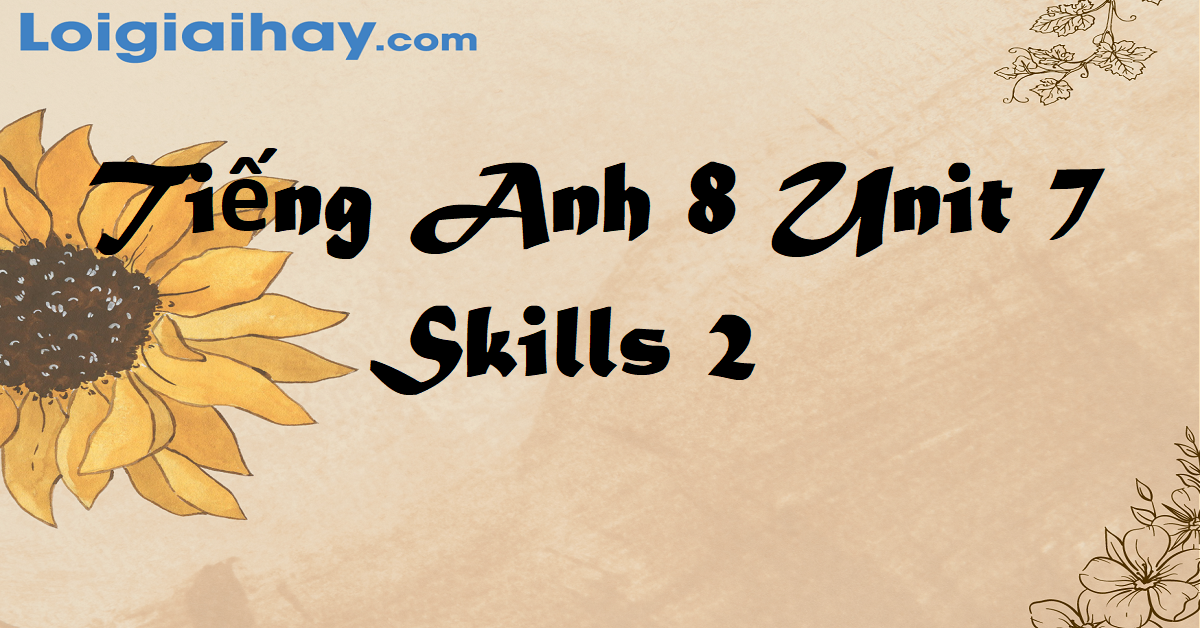Bài 2
2. Nghe một bài nói và chọn từ đúng để hoàn thành mỗi câu.
(Listen to a talk and choose the correct word to complete each sentence.)
-
Nước bị ô nhiễm không an toàn cho việc [uống] / [nấu nướng] và các cách dùng khác.
-
Vài hợp chất độc hại hòa vào nước sông từ [nhà máy] / [bệnh viện].
-
Ô nhiễm nguồn nước có một ảnh hưởng [nguy hiểm] / [độc hại] trong đời sống.
-
Chúng ta không thể / không nên [ném rác] xuống sông và hồ.
Phương pháp giải:
Bài nghe:
All living things need water but water pollution has become a serious problem. Polluted water is unsafe for drinking and for other uses.
Water pollution happens when wastes and toxic substances make the water unsafe. There are two sources of water pollution: man-made and natural. Man-made substances pollute water when they flow into the water from factories and homes. Natural pollution occurs when rainwater with toxic chemicals flows into rivers or lakes. These rivers and lakes are a source of drinking water for humans. Water pollution has a harmful effect on our lives. But there are ways we can reduce water pollution. The first thing we can do is to treat water from factories and households. We should stop littering, especially dumping waste into rivers and lakes. Finally, we can reduce water pollution by using green products and avoiding single-use products like plastic bags.
Tạm dịch:
Tất cả các sinh vật sống đều cần nước nhưng ô nhiễm nước đã trở thành một vấn đề nghiêm trọng. Nước bị ô nhiễm không an toàn để uống và cho các mục đích sử dụng khác.
Ô nhiễm nước xảy ra khi chất thải và các chất độc hại làm cho nước không an toàn. Có hai nguyên nhân gây ô nhiễm nước: nhân tạo và tự nhiên. Các chất nhân tạo gây ô nhiễm nước khi chúng chảy vào nước từ các nhà máy và nhà ở. Ô nhiễm tự nhiên xảy ra khi nước mưa có hóa chất độc hại chảy vào sông hoặc hồ. Các sông, hồ này là nguồn cung cấp nước uống cho con người. Ô nhiễm nước có ảnh hưởng độc hại đến cuộc sống của chúng ta. Tuy nhiên, có nhiều cách để chúng ta có thể giảm thiểu ô nhiễm nước. Điều đầu tiên chúng ta có thể làm là xử lý nước từ các nhà máy và hộ gia đình. Chúng ta nên ngừng xả rác, đặc biệt là việc đổ rác xuống sông hồ. Cuối cùng, chúng ta có thể giảm ô nhiễm nước bằng cách sử dụng các sản phẩm xanh và tránh các sản phẩm sử dụng một lần như túi nhựa.
Lời giải chi tiết:
- [uống]
- [nhà máy]
- [độc hại]
- [nên]
That was an interesting talk about the dangers of water pollution. It’s crucial for us to be aware of the impact our actions have on the environment, especially when it comes to water. Polluted water not only poses a threat to our health, but it also affects the entire ecosystem.
Water pollution can be caused by both human activities and natural factors. Industrial facilities and households release toxic substances into rivers and lakes, contaminating the water. Meanwhile, chemicals from rainfall can also flow into natural water sources, further contributing to pollution.
The consequences of water pollution are significant. It not only affects our access to clean drinking water but also harms aquatic life and disrupts ecosystems. It’s essential for us to take immediate action to mitigate the problem.
To reduce water pollution, we can start by treating the water discharged from factories and homes. Additionally, we should avoid littering, especially throwing waste into rivers and lakes. Simple changes like using environmentally friendly products and reducing our reliance on single-use items can also contribute to a cleaner water supply.
Let’s remember that we all share the responsibility of protecting our environment. By being conscious of our actions and making sustainable choices, we can make a positive impact on the health of our planet.
To test and improve your English skills, check out testtoeic.com, where you can take free TOEIC and English grammar tests. It’s a great resource to enhance your language proficiency and achieve your language learning goals.
